At home, your electric vehicle’s (EV) standard charging cable is your ticket to
ride. Simply plug in, power up, and head for the road.
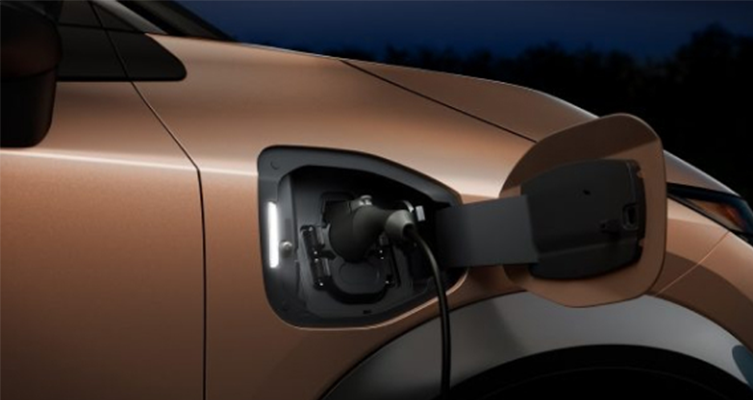
Level 1 Charging
Plug it in, like any device
Charging at home requires nothing more than plugging your EV's electric vehicle supply equipment (its charging cable) into a standard 3-pin, 120-volt outlet. "Level 1Charging", requires no special equipment and provides a slower charging cycle compared to dedicated EV recharging equipment. See Owner's Manual for charging instructions and safety precautions.2
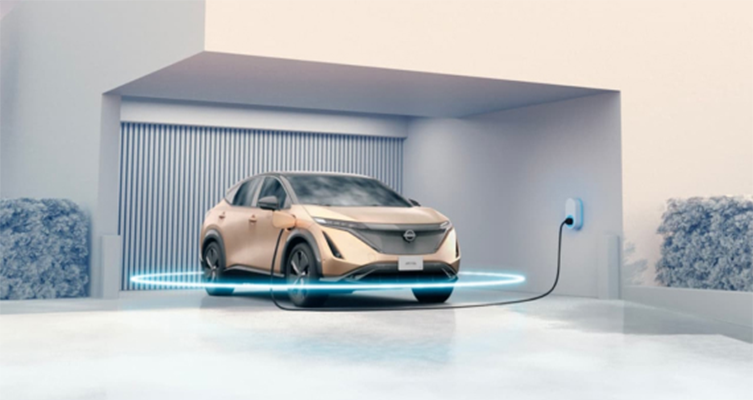
Level 2 Charging
Take home charging to the next level
Sold separately from your EV, the Pulsar Plus™ (see below) charger allows for a much faster charging cycle compared to Level 1 charging. Because it's a dedicated Level 2 unit that plugs into a 240-volt outlet, special equipment is required.3 Level 2 charging provides a much faster charging cycle compared to Level 1 charging.1

How to charge an EV without a garage
No garage? No problem!
As long as you have a power source and a place to park, you can charge your electric vehicle at home. If you don’t have a garage, outdoor-rated, weather-sealed recharging equipment can be installed on the exterior of your home.
Live in an apartment? Many residential complexes are starting to offer charging units in parking garages. Reach out to your property manager to find out what your options are.
Nissan and Wallbox™ home charging3
The only thing easier than charging with a Wallboxhome charger is having one installed.
Nissan and Wallbox™ have teamed up to make charging your new ARIYA or LEAF from your home easier than ever. Whether it’s a Level 2 home charger or a bundled charger and home installation, together Nissan and Wallbox™ have you covered.3
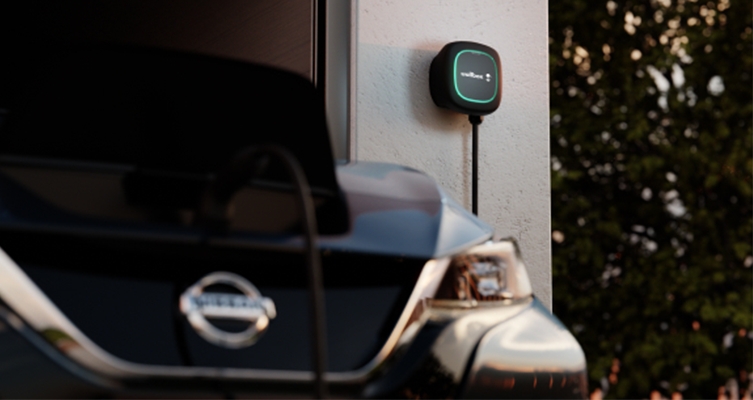
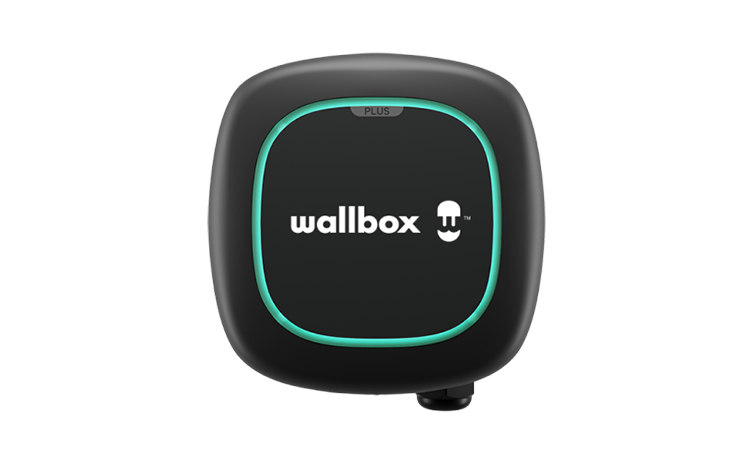
Pulsar Plus™ Level 2 Home Charger3
Powerful performance. Compact design. Smart charging just got smarter.
Available in either a 40A or 48A configuration, the 240V Pulsar Plus™ is the Level 2 EV home charger preferred by Nissan and Nissan North.3 The Pulsar Plus™ features:
- Up to 8x faster charging than Level 1(120-volt) charging cables
- Watertight and dust resistant for indoor or outdoor use (NEMA Type 4 rated)
- Wireless charging control and monitoring using myWallbox app (control charging schedules, receive charging completion notifications and more!
- Full compatibility with ARIYA and LEAV
- Easy installation with COIL – a certified Wallbox™ subsidiary
- Wallbox's 3-year warranty4
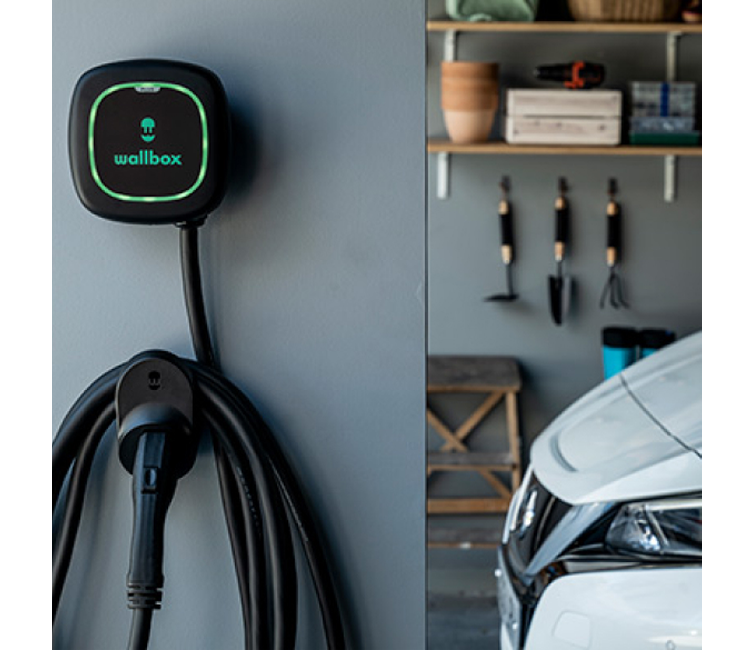
Home installation made easy
Install your charger with COIL3
COIL's end-to-end EV charging solutions make your home charger installation effortless.3 All you need to do is:
- Submit your property information to get an installation estimate
- Approve your estimate, schedule installation, get your charger installed
- Start charging your EV at home
Tips For Installing Your Home Charger
Before you install your home charger, here are a few tips to help the process run more smoothly.3
Use a professional
Professional installers understand local regulations and are qualified to work with electrical equipment. They are licensed and bonded, and their work is typically guaranteed.
Location
Consider how you normally park your car. Since the charge port on both the ARIYA and LEAF is located towards the front of the vehicle, you'll want to install your home charger so that the charge cable can easily reach the charge port with minimal obstruction.
Cable
To ensure there is never tension in the cable or cable connections, locate your wall charger so that once mounted, there is ALWAYS a measure of slack in the charging cable.
Mounting
Your charger should be mounted to a vertical wall-stud or securely to a wall with appropriate mounting anchors.
240-volt outlet
Your EV home charger draws power from a 240-volt outlet, like the one your laundry dryer uses. If you have an existing 240-volt outlet available for use with your home charger, ensure it is properly located, correctly installed and compliant with local regulations. If you need to install one, a professional installation by a qualified technician is highly recommended.3
Additional home installation tips:
- Your EV home charger should only be installed by qualified, professional technicians.
- Your EV home charger installation must comply with local regulations.
- Your EV home charger must be grounded.
- Your EV home charger must be protected from impacts, moisture and misuse.
- EV home chargers typically have no user-serviceable parts. Never attempt to repair your home charger yourself – always call in a qualified professional technician for any repairs.
1Charging time and capacity may vary based on battery temperature.
2For Level 1 home charging, use only a 110-120-volt, 15-amp dedicated outlet for charging. See Customer Disclosure Form for details.
3240V home charging dock sold separately. Not a Nissan product. Some chargers may not be compatible with your LEAF. Contact charger manufacturer before purchasing for information on compatibility and warranty. Nissan does not warrant and is not responsible for loss, including consequential, incidental, or other damages, caused by charger defects, charger incompatibility, or installation services.
4Limited Warranty Coverage. For a period of three(3) years from the date of your purchase, Wallbox warrants that the Equipment shall be free from defects in material and workmanship under normal use and service.
